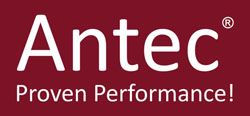Award Winning ROXY™ at 58th ASMS
Antec will display its award winning ROXY™ EC systems used up-front MS for on-line Electrochemistry/MS during the 58th ASMS Conference on Mass Spectrometry and Allied Topics held in Salt Lake City, Utah, USA, May 23–27, 2010...

Antec will display its award winning ROXY EC systems used up-front MS for on-line Electrochemistry/MS during the 58th ASMS Conference on Mass Spectrometry and Allied Topics held in Salt Lake City, Utah, USA, May 23–27, 2010.
Visit Antec at booth #87 to get an update on the latest developments in Electrochemistry/MS, and learn why our ROXY has been chosen as the number one innovative product at Analytica 2010 in Munich, winning the prestigious gold star award sponsored by GIT publisher (a Wiley Company).
The power of on-line Electrochemistry/MS (EC/MS) for predicting drug/xenobiotic metabolism, or for mimicking oxidative damage of DNA, resulting in substantial time and costs savings, will be illustrated through posters presented by users of the ROXY EC/LC system, as well as oral contributions given by Prof. Dr. Uwe Karst and Prof. Dr. Herbert Oberacher.
We will showcase our latest novelty, the µ-PrepCell. This cell has been specially designed for micro preparative work providing the capacity to convert microgram quantities of a target compound into the appropriate redox products (including intermediates) in a short period of time. For a detailed program overview of Antec's contributions at ASMS, visit www.myAntec.com
Fundamentals of Benchtop GC–MS Data Analysis and Terminology
April 5th 2025In this installment, we will review the fundamental terminology and data analysis principles in benchtop GC–MS. We will compare the three modes of analysis—full scan, extracted ion chromatograms, and selected ion monitoring—and see how each is used for quantitative and quantitative analysis.
Characterizing Plant Polysaccharides Using Size-Exclusion Chromatography
April 4th 2025With green chemistry becoming more standardized, Leena Pitkänen of Aalto University analyzed how useful size-exclusion chromatography (SEC) and asymmetric flow field-flow fractionation (AF4) could be in characterizing plant polysaccharides.
This information is supplementary to the article “Accelerating Monoclonal Antibody Quality Control: The Role of LC–MS in Upstream Bioprocessing”, which was published in the May 2025 issue of Current Trends in Mass Spectrometry.




